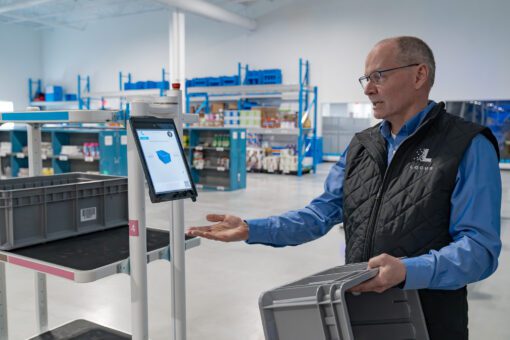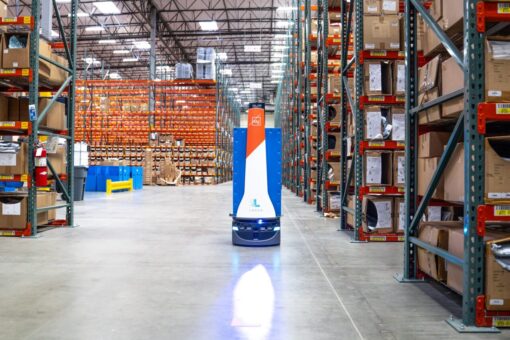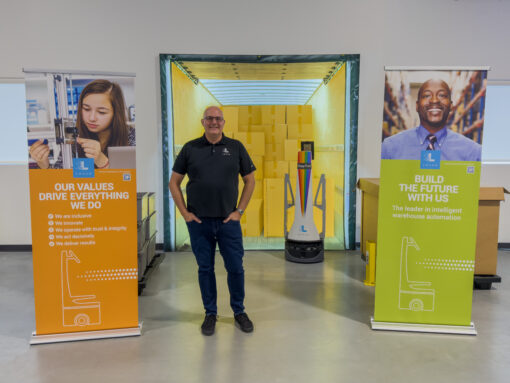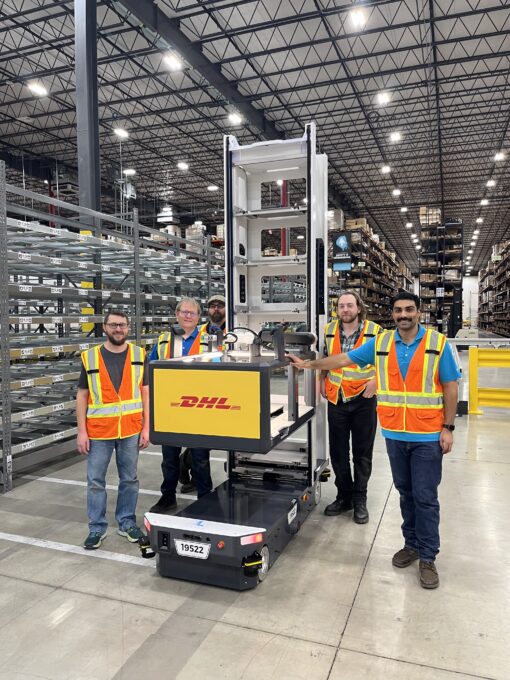WP: How to achieve 400 UPH with Locus Fast Pick
WP: How to achieve 400 UPH with Locus Fast Pick Download Now!
From Pen and Paper to Robots: Inside Staples Canada's Automation Journey
Mary Hart, Sr. Content Marketing Manager
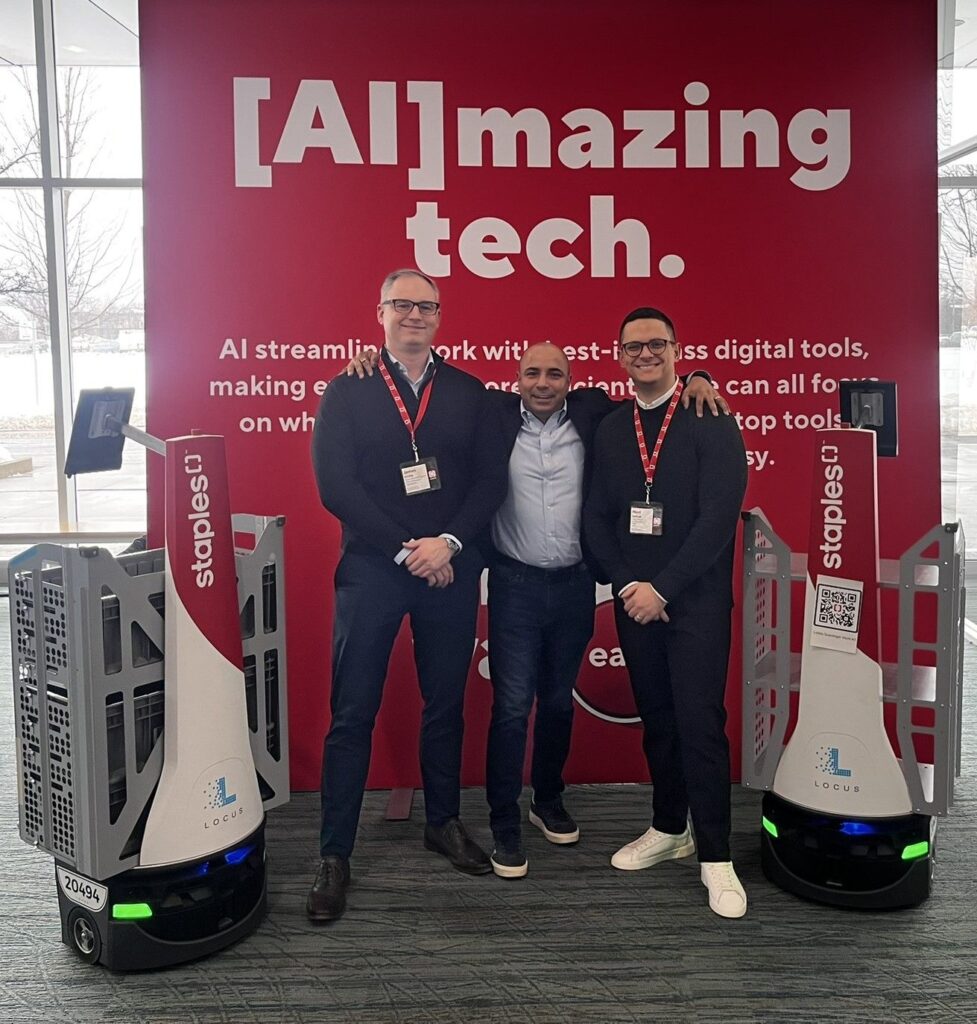
When Mert Selcuk joined Staples Canada as Senior Manager of Supply Chain Strategy and Capabilities, he didn’t just step into a supply chain organization. As Selcuk’s team is responsible for everything from network design to system engineering and long-term planning, he stepped into a true warehouse transformation. One of their biggest challenges wasn’t about blueprints or throughput. Instead, it was cultural and meant moving a decades-old network from pen and paper to a future built on automation.
“We’d just completed the rollout of a tier-one WMS,” Selcuk said on a recent episode of “Warehouse Automation Matters”. “That allowed us to ask the question: what’s next?”
That question became the catalyst for Staples Canada’s warehouse automation journey, which was grounded in data, cross-functional alignment, and a people-first mindset.
Laying the Automation Foundation with Strategy
The temptation for any operation exploring warehouse automation is to jump straight to the newest tool, but Selcuk urged caution.
“The automation landscape is exponential — it’s not linear,” he explained. “If you’re reading about a technology on a whitepaper, you’ve probably already missed the window of opportunity.”
To avoid chasing trends, the Staples team asked hard questions up front:
- What are we trying to solve?
- How will this technology integrate with our existing operations?
- Will it support, and not disrupt, our associates?
Armed with that clarity, the team began vetting vendors through a strategic lens. Autonomous Mobile Robots (AMRs) rose to the top for their flexibility, ease of implementation, and collaborative design. “We were very happy with the RaaS model as it let us scale without the weight of a capital-heavy structure,” Selcuk said. “But more importantly, we wanted a solution that empowered our people. That made AMRs a natural fit.”
Data-Driven Design, Bottom-Up Buy-In
Instead of a top-down rollout, Staples took a different approach and engaged every stakeholder early and often.
“We didn’t want to come in with a final solution and ask for buy-in,” Selcuk explained. “We involved our fulfillment center teams in the design cycle from the beginning. That way, it wasn’t just a good idea on paper — it was operationally sound.”
The Staples team pulled extensive data sets, including transaction-level outbound picks, item and location masters, historical inventory snapshots, and used them to design and validate multiple proof-of-concept models. The process wasn’t quick, but it was intentional and then it was time for cross-functional alignment.
“We built a tightly knit implementation team across engineering, supply chain systems, IT, project management, operations, and Locus,” Selcuk said. “Everyone had a role. Everyone was invited to the same calls. Our goal was to eliminate silos before they could form.”
This collaborative model paid off. “Our senior director of strategy once said after a call, ‘I couldn’t tell who was Staples and who was Locus,’” said Selcuk. “That kind of cohesion is what made the difference.”
Validation in the Metrics
From the first day of go-live, Staples Canada tracked their success with a laser focus on productivity KPIs like lines per hour (LPH) and units per hour (UPH). Using tools like LocusView and LocusHub, the team measured performance in real time and exceeded their targets, but the most powerful validation came from the floor.
“One of our associates, Grace, looked around at 3:30 p.m. one day and said, ‘It must’ve been a slow day,’” Selcuk recalled. “But when we checked the dashboard, we had hit our average Tuesday volume. We’d just done it faster with less friction.”
That moment captured the heart of Staples Canada’s strategy to use automation not to replace people, but to improve their workday.
What’s Next: Agility, Balance, and True Partnership
As Selcuk puts it, the automation journey at Staples Canada is just beginning. But already, the results are clear: faster order turnaround, greater scheduling flexibility, reduced reliance on bolted infrastructure, and stronger associate engagement. And a true partnership is at the core of it all.
“Locus wasn’t just a vendor,” Selcuk said. “They were embedded in our teams, even before we signed a PO. They visited five of our sites just during the evaluation phase. That level of commitment is what partnership looks like.”
Want to hear the full story? Listen to the full podcast episode with Mert Selcuk of Staples Canada on Warehouse Automation Matters.

